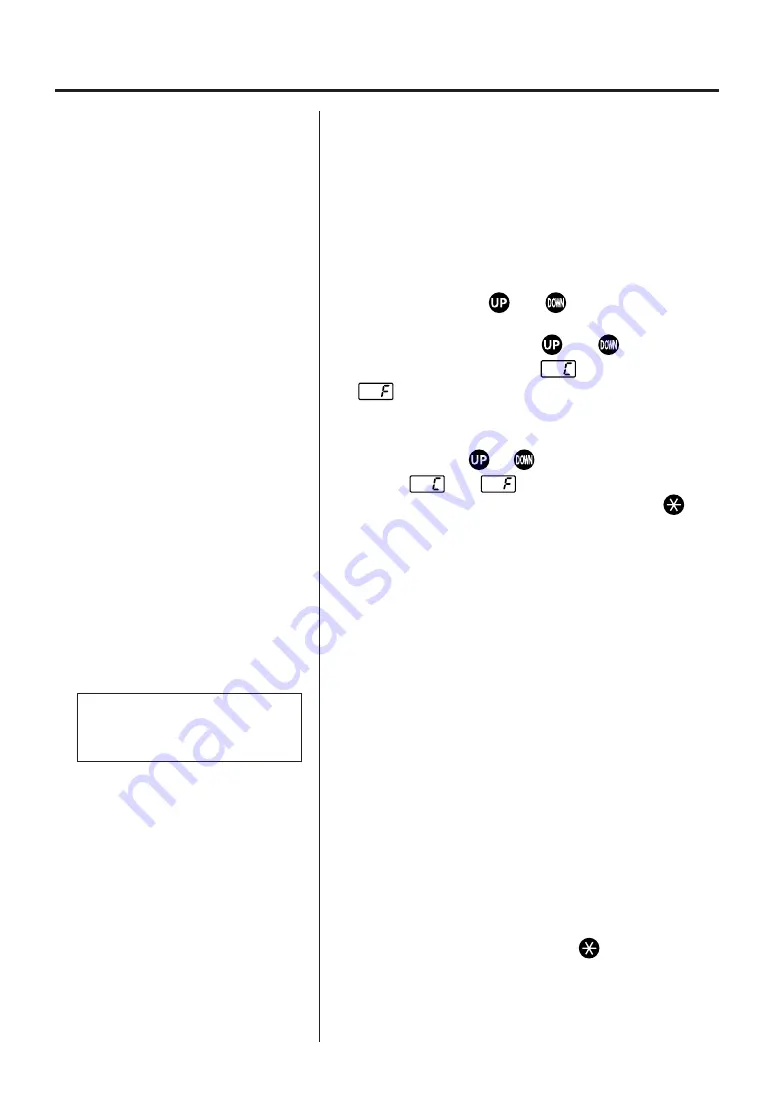
6. PARAMETERS
The HAKKO 937 has three user-adjustable or viewable
parameters: a) Temperature display mode (Centigrade or
Fahrenheit), b) Heater-error temperature tolerance, and
c) Room temperature compensation value (test mode).
Once parameter-input mode is entered, these
parameters are set in the order shown. Once all three
parameters have been set, normal operation is resumed.
1. Turn off the power switch.
2. Press and hold the
and
buttons
simultaneously, and turn on the power switch.
3. Continue holding down the
and
buttons until
the display indicates either
(for Centigrade) of
(for Fahrenheit). The station is now in
parameter input mode.
4. Press either the
or
button to alternately
display
and
.
5. When the desired method is displayed, press
.
The heater-error temperature will now be displayed
and the left-most digit (100’s digit) in the display will
begin flashing.
The heater-error temperature tolerance parameter is
entered in the same manner as used to set the
temperature. (see pg. 4, 5, steps 2-4.)
Be sure to use a value within the allowable range. (see
chart at left). If a value outside this range is selected, the
display will again flash the 100’s digit. Should this occur,
re-enter a correct value.
After setting the heater-error temperature tolerance, the
display will show the room temperature compensation
value (test mode).
This is the measured temperature of the soldering iron
tip. It is used to calibrate the tip temperature. (see pg. 7,
Calibration of iron temperature)
No inputs are made here. The display will not blink nor
will the heater receive power. Press
to complete
parameter input. The soldering temperature setting will
be displayed for two seconds, then power will be
supplied to the heater and normal temperature control
will begin.
Heater-error temperature range
Centigrade: 30 - 150
°
C
Fahrenheit: 60 - 300
°
F
6
Parameter input mode
1. Centigrade or Fahrenheit
temperature display
2. Heater-error temperature
tolerance
(see Heater error on page 11)
3. Room temperature
compensation value
(test mode)




















